In today’s world, electricity is a fundamental part of our daily lives, powering everything from our homes to our gadgets. But what happens when the lights go out? Whether due to natural disasters, unexpected power outages, or a deliberate choice to live off-grid, knowing how to navigate life without electricity can be invaluable.
Key Takeaways:
- Store canned and dry foods, learn water storage and purification, and have light and medical supplies ready.
- Use methods like rainwater harvesting and water storage tanks for a steady water supply.
- Use gas or propane stoves, solar ovens, and open fire cooking to prepare meals without electricity.
- Use solar showers, manual water pumps, composting toilets, and portable toilets to stay clean and sanitary.
This article explores essential tips and strategies to help you thrive without relying on the power grid. From securing a reliable water source and cooking without modern appliances to maintaining hygiene and ensuring effective heating and cooling, it covers everything you need to know to surviva a life without electricty.
Why Live Without Electricity?
Living without electricity might seem unimaginable in today’s world, but there are several scenarios where it becomes a necessity. Whether it’s due to natural disasters, unexpected power outages, or a choice to embrace off-grid living, understanding how to adapt can make these situations less daunting.
Natural Disasters
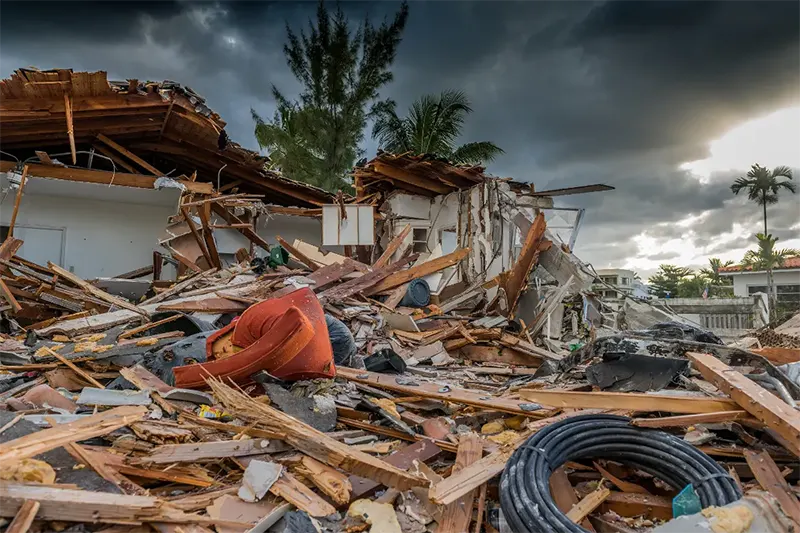
Natural disasters like hurricanes, earthquakes, and floods can knock out power for days or even weeks. During these times, having strategies to live without electricity is crucial.
It means finding alternative ways to cook, stay warm, and communicate. Learning to rely on basic survival skills can make a significant difference in these challenging situations.
Power Outages
Unexpected power outages can happen for various reasons, from severe weather to grid failures. While these outages are typically temporary, they can still disrupt daily life. Being prepared with backup power sources, like generators or solar panels, can help bridge the gap until power is restored.
Off-Grid Living
For some, living without electricity is a deliberate lifestyle choice. Off-grid living promotes sustainability and independence, reducing reliance on conventional energy sources.
This way of life often involves using renewable energy, such as solar or wind power, and making conscious choices to conserve energy. It’s about embracing simplicity and finding harmony with nature.
Preparing for a Life Without Electricity
When preparing for a life without electricity, it’s crucial to plan and prioritize effectively. Preppers and survivalists understand that self-reliance and readiness can make a significant difference in challenging times. Here’s a detailed guide to help you prepare:
Assessing Your Needs
Water should be your top priority as a person can survive longer without food than without water. Focus on foods that are high in calories and nutrients and have a long shelf life.
The climate of your location will determine the importance of securing a heat source, which can be critical in colder regions. While not immediately life-threatening, having light and communication tools is essential for maintaining safety and normalcy.
Stockpiling Essentials
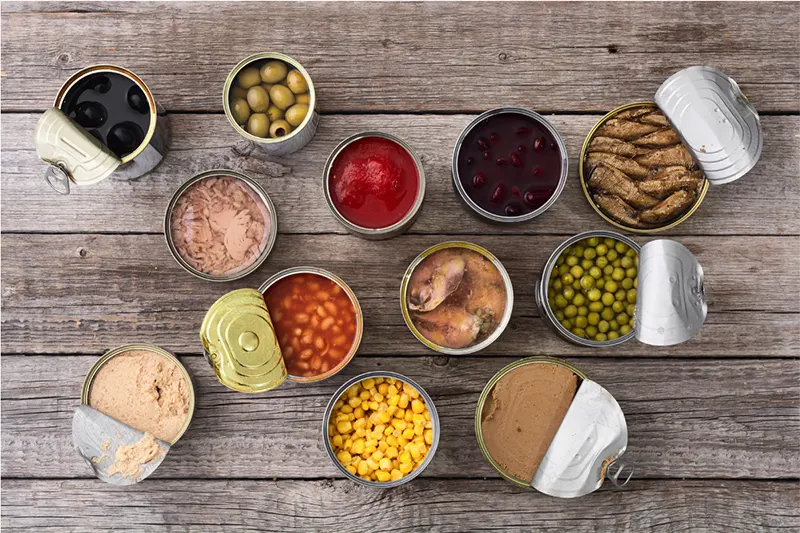
Canned goods, such as beans, vegetables, meats, and soups, are excellent options to have when electricity gets cut off. Dry foods like rice, pasta, and dried beans have long shelf lives and are easy to store. Freeze-dried foods, which are lightweight and can be rehydrated with water, are also a practical choice.
Preparing Medical Supplies and First Aid Kits
A basic kit should include bandages, antiseptics, pain relievers, and any necessary prescription medications. For a more comprehensive kit, consider adding items like splints, tourniquets, and a manual on emergency medical care.
Keeping Alternative Sources of Light
In the absence of electricity, having reliable sources of light is crucial for maintaining visibility, safety, and a sense of normalcy.
Solar-Powered Lights

Solar lights are a sustainable and cost-effective solution once installed. They charge during the day and provide light at night. Consider solar lanterns, path lights, and motion-sensor lights for added security. To maximize efficiency, place solar panels in direct sunlight and keep them clean to ensure effective charging.
Battery-Powered Lights
Battery-powered lights are reliable and portable, making them essential for any emergency kit. LED flashlights, headlamps, and lanterns are recommended products.
Proper storage and maintenance of batteries are crucial; store them in a cool, dry place and check expiration dates. Rechargeable batteries and solar-powered chargers are also beneficial to have on hand.
Candles and Oil Lamps
While candles and oil lamps can be effective, they require careful handling due to the risk of fire. Always place them on stable surfaces away from flammable materials. Extinguish them properly to avoid accidents and ensure good ventilation when using oil lamps to prevent the buildup of harmful fumes.
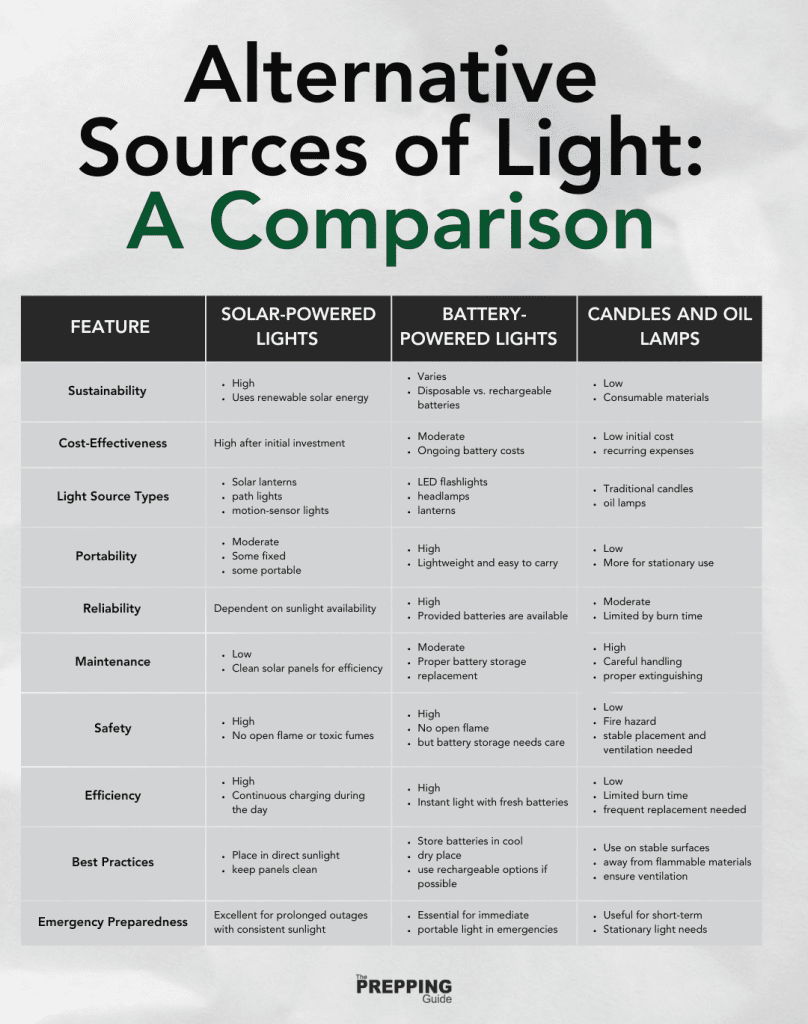
Cooking Without Electricity
In situations where electricity is unavailable, having alternative cooking methods is essential for ensuring you can prepare meals safely and efficiently. Here are some effective ways to cook without relying on electricity:
Gas and Propane Stoves
Using gas and propane stoves is a convenient and reliable option for cooking without electricity. These stoves are portable and can be used both indoors and outdoors. They provide instant heat and can be adjusted for precise temperature control.

These stoves are easy to transport, making them ideal for camping and emergency situations. They also ignite quickly and offer adjustable flames for various cooking needs. You can use them for boiling, frying, grilling, and baking.
However, when using gas and propane stoves, it’s crucial to prioritize safety. Always operate these stoves in well-ventilated areas to prevent carbon monoxide buildup, ensuring a steady flow of fresh air.
Proper storage of fuel canisters is also essential to prevent leaks and explosions; they should be kept in a cool, dry place away from direct sunlight.
Solar Ovens
Solar ovens are an eco-friendly and sustainable way to cook using the power of the sun. They are particularly useful in sunny climates and can be constructed easily with basic materials.
The best thing about these ovens is that they’re easy to build. You can make one following these steps:

Solar ovens offer several advantages, making them an attractive option for cooking without electricity. They are cost-effective, utilizing free solar energy, which reduces ongoing expenses.
Additionally, solar ovens are environmentally friendly, producing no emissions and conserving traditional energy resources. Safety is another significant benefit, as there is no risk of fire, making them a safe choice for various environments.
However, there are also some drawbacks to consider. Solar ovens are highly dependent on weather conditions, requiring strong, consistent sunlight to function effectively.
This limitation can make them unreliable on cloudy or rainy days. Moreover, solar ovens often require longer cooking times compared to conventional methods, which can be inconvenient when quick meal preparation is needed.
Open Fire Cooking
Cooking over an open fire is a traditional method that brings a sense of adventure and enjoyment. It’s a simple yet effective way to prepare meals, as long as you have the right tools and techniques.
Common methods include grilling juicy meats, roasting vegetables, boiling soups, and even baking delicious treats in foil packets. For this, you’ll need sturdy cookware that can handle high heat.
To get started, gather some firewood, matches or a lighter, a grill grate, and long-handled utensils. These essentials will help you manage the fire safely and cook your food efficiently.
Embracing these techniques and tools not only makes cooking without electricity feasible but also turns it into a delightful and rewarding experience.
Heating and Cooling Solutions
Having reliable heating and cooling solutions is essential for keeping your home safe and comfortable, especially when the power goes out. In cold weather, adequate heating is not just about comfort; it’s about survival.
Without it, you risk hypothermia, which can be life-threatening. Plus, keeping your home warm prevents pipes from freezing and bursting, saving you from costly repairs.
In hot weather, cooling solutions are equally important. They help prevent heat-related illnesses like heat exhaustion and heat stroke. Staying cool also means you can sleep better and generally feel more comfortable.
Whether you’re dealing with a temporary power outage or living off the grid, these heating and cooling methods are key to ensuring your well-being and peace of mind.
Passive Solar Heating
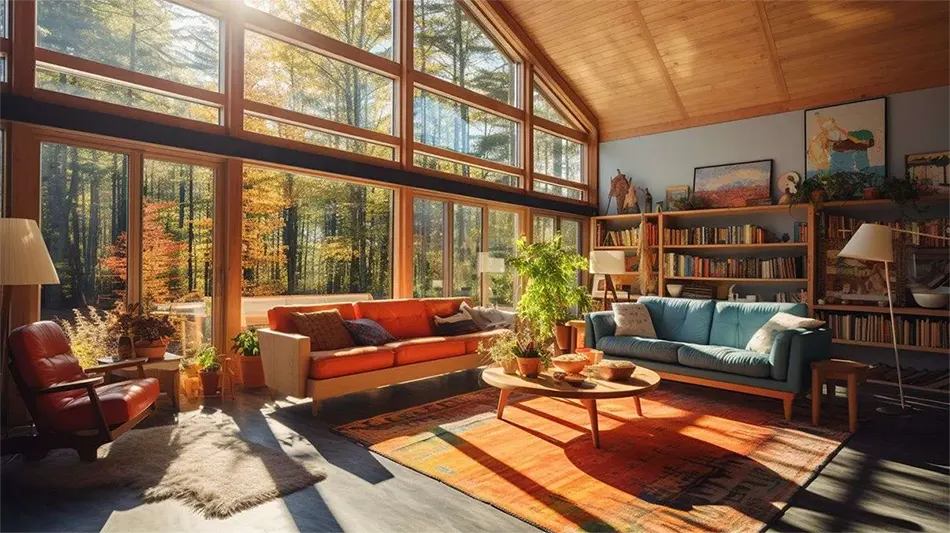
Passive solar heating involves designing your living spaces to capture and retain natural heat from the sun.
This can be achieved by strategically placing windows and thermal masses, such as concrete or brick walls, where they can absorb and slowly release heat. South-facing windows are ideal for maximizing sun exposure in the Northern Hemisphere.
To make the most of passive solar heating, proper insulation is crucial. Ensure your home is well-insulated, particularly around windows and doors, to keep the heat inside. Using heavy curtains or thermal blinds can also help retain warmth at night.
Additionally, proper ventilation is essential to prevent overheating and maintain air quality. Incorporate vents or operable windows to allow excess heat to escape during warmer parts of the day.
Wood Stoves and Fireplaces
Wood stoves and fireplaces are excellent sources of heat, especially during colder months. When choosing a wood stove, consider the size of the area you need to heat and the efficiency of the stove.

Look for models with high energy efficiency ratings and features like airtight doors and secondary combustion to get the most heat from your wood.
Selecting the right type of wood is also vital for efficient heating. Hardwoods like oak, maple, and hickory burn longer and hotter than softwoods, making them ideal for heating. Ensure the wood is well-seasoned, meaning it has been dried for at least six months, as wet or green wood burns inefficiently and produces more smoke.
Proper storage is also crucial. Try to keep your woodpile covered and off the ground to protect it from moisture, and store it close to your home for easy access during the winter.
Staying Cool Without AC
Taking advantage of natural ventilation can significantly lower indoor temperatures. Open windows and doors to create cross-ventilation, allowing cool air to flow through your home. Use fans to enhance this effect, strategically placing them to push hot air out and bring cooler air in.
Additionally, shading your home from the sun can make a big difference. Close blinds or curtains during the hottest part of the day, and consider using reflective window coverings to reduce heat gain.
Here’s a comparison of the different cooling methods you can do when there’s no electricity in your area:

Securing a Water Source
When living without electricity, having a reliable water source is crucial for drinking, cooking, and cleaning. Here are practical methods to collect, store, and purify water to ensure you always have access to safe water.
One effective method is rainwater harvesting. Installing gutter systems and downspouts on your roof can channel rainwater into storage containers, providing a significant amount of water during rainy seasons.
Rain barrels under these downspouts are easy to set up and can store substantial amounts of water. For larger needs, consider installing large water storage tanks, which can collect thousands of gallons of rainwater for long-term use.
Water storage tanks come in two types: above-ground and underground. Here’s how they differ from each other:
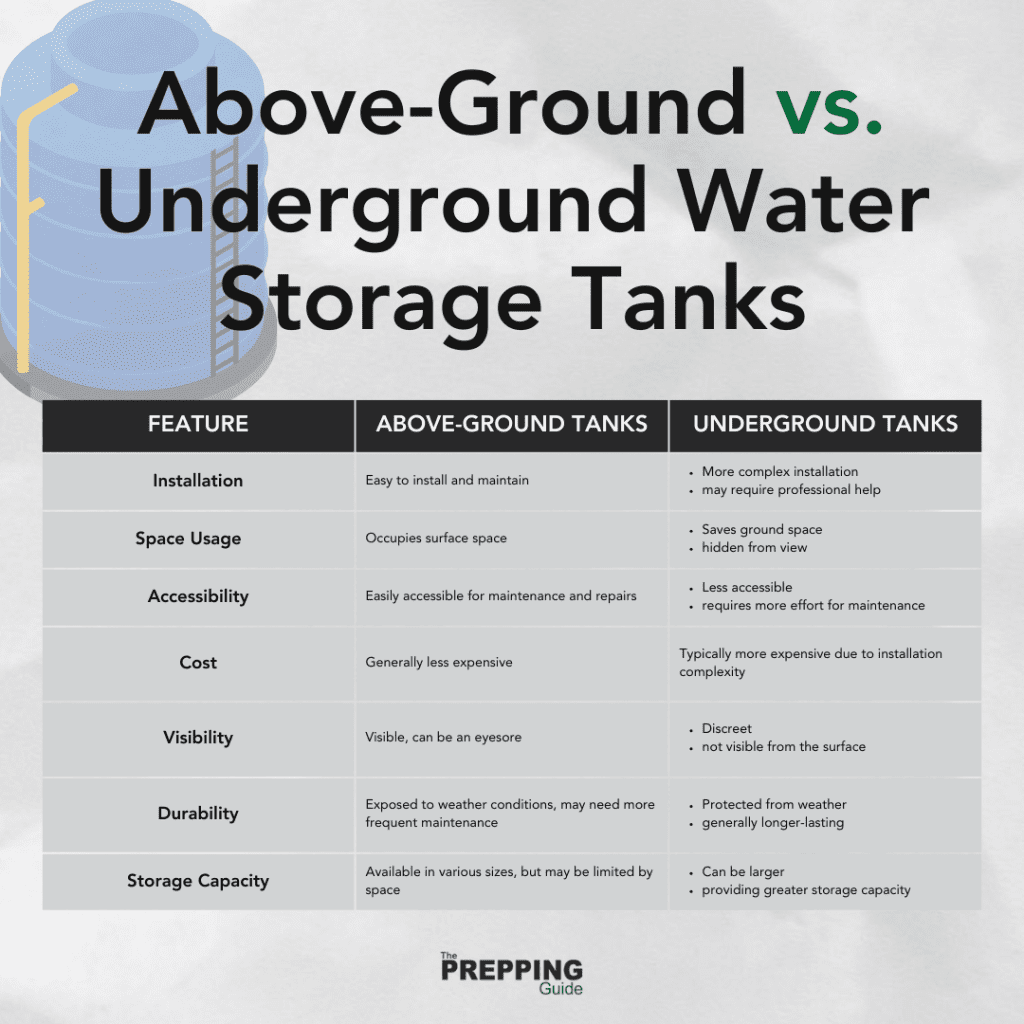
Water Purification Techniques
In a world without electricity, ensuring the safety of your water supply is paramount. Whether you are collecting rainwater or drawing from natural sources, it is essential to purify the water to protect yourself from harmful pathogens and contaminants.
Here are some of the best ways to do that:
Boiling

Boiling water is one of the simplest and most effective ways to purify it. By bringing water to a rolling boil for at least one minute (or three minutes at higher altitudes), you can kill most pathogens, including bacteria, viruses, and parasites. Boiled water is safe for drinking, cooking, and cleaning.
Portable Water Filters
These are perfect for on-the-go purification. Many portable filters can remove bacteria, protozoa, and even some chemicals from water. They’re lightweight and easy to use, making them ideal for emergencies or camping.
Homemade Filters
You can create your own water filter using materials like sand, charcoal, and gravel. While these filters may not be as effective as commercial ones, they can significantly improve water quality by removing particulates and some impurities.
Water Purification Tablets
These tablets are a convenient way to disinfect water. They typically contain chlorine, iodine, or other chemicals that kill harmful microorganisms. Follow the instructions on the packaging for the correct dosage and wait time.
Here’s a short video to help you understand how to use water purification tablets better:
Bleach
In emergencies, household bleach can be used to purify water. Add eight drops of plain, unscented bleach per gallon of water, stir, and let it sit for at least 30 minutes before use. Ensure the bleach contains no additives and is safe for disinfection.
Maintaining Personal Hygiene and Proper Sanitation
Living without electricity doesn’t mean compromising on cleanliness. Solar showers are a fantastic way to stay clean without relying on electricity. Simply fill a solar shower bag with water, leave it in direct sunlight for a few hours, and you’ll have warm water ready for a refreshing wash.
If you prefer a more traditional approach, manual water pumps can be a great solution. These pumps allow you to access water from wells or other sources without needing any power. It’s a bit of a workout, but the reward is clean, accessible water.
Don’t forget about proper sanitation. It’s crucial for maintaining a healthy living environment, particularly when there’s no electricity.
Composting Toilets
Composting toilets are an excellent alternative to traditional flush toilets. They are designed to decompose waste naturally, turning it into compost that can be safely used in gardens. These toilets are not only eco-friendly but also reduce water usage significantly.
Portable Toilets
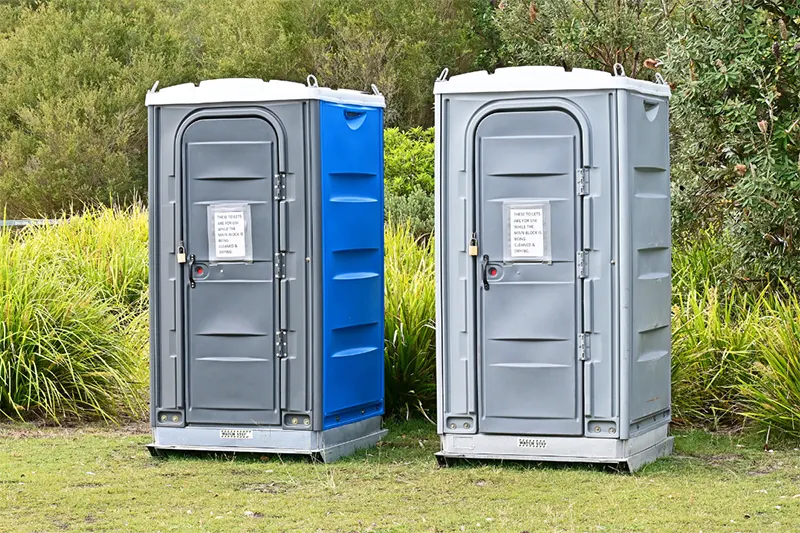
For temporary situations or when you’re on the move, portable toilets are a convenient option. They are easy to set up and maintain, ensuring you have access to sanitation facilities wherever you are. Look for models that are designed for easy disposal and minimal environmental impact.
Conclusion
Living without electricity might seem daunting at first, but with the right strategies and preparations, it can be a manageable and even rewarding experience. Whether you’re facing a temporary power outage, a natural disaster, or choosing to live off-grid, understanding how to adapt is crucial.
By implementing practical methods for collecting and storing water, purifying your water supply, and maintaining personal hygiene and sanitation, you can ensure your well-being and resilience in any situation.
Embracing these practices not only enhances your self-sufficiency but also fosters a deeper connection with nature and a simpler way of life. Start small, plan effectively, and gradually incorporate these strategies to make living without electricity a feasible and empowering choice.
FAQs
Do humans need electricity?
While humans do not inherently need electricity to survive, it significantly enhances our quality of life by powering essential services like lighting, heating, communication, and medical equipment. Without it, daily activities would be more challenging, and modern conveniences would be unavailable.
What appliances do not use electricity?
Non-electric appliances include manual kitchen tools like hand-crank mixers and grinders, gas stoves, solar ovens, and mechanical clocks. These devices operate using alternative energy sources or manual effort.
How to generate electricity?
Electricity can be generated through various methods, including solar panels, wind turbines, hydroelectric generators, and gasoline or propane-powered generators. Each method converts different forms of energy—solar, wind, water flow, or fuel combustion—into electrical power.
How can I heat and cook without electricity?
You can heat and cook without electricity using gas or propane stoves, wood-burning stoves, and open fire pits. Additionally, solar ovens can harness the sun’s energy to cook food, while proper insulation and passive solar heating can help keep your home warm.

We use a large ceramic (orange) flower pot with a drain hole in the bottom:
turn up-side down & elevate on several bricks or something similar / make sure there is clearance for the candles:
place multiple Tea Light candles under the pot- the hole becomes a chimney & draws the heat upward.
We were amazed at the amt of heat generated by this method but it works great for a small area.
Thank you SO Much for sharing this, Marianne! I am going to try this! 🙂
This has been helpful. The way things are going even if people don’t go without electricity completely a lot of people will be reducing the amount they use enormously.
unfortunately this article is out of touch with reality. If we actually lost power the CDC estimates that 90% of the population will die within 9 months. I think it will be quicker because desperate people will go around killing each other for a can of soup. If we loose power you will need enough food and to survive past the first 9 months after which time you’ll be able to hunt and gather and plant crops etc but until then you will need enough ammo to protect yourself and your food and as far as this article… everything it mentions like using garbage bags to poop in… there will be no garbage bags. We need to think about how to live in a time before electricity where the only manufacture and trade is local. unless your neighbor is making garbage bags from the plastic his neighbor is making from the oil his neighbor is pumping out of the ground, we need ways to survive without these things.
The world is going to stink with all those dead bodies lying around, apartment blocks are going to be fun, when you have dead bodies on the tenth floor and no elevator, what you going to do? toss them out the window like 9/11.
Head for the hills now.
yassssssss queen